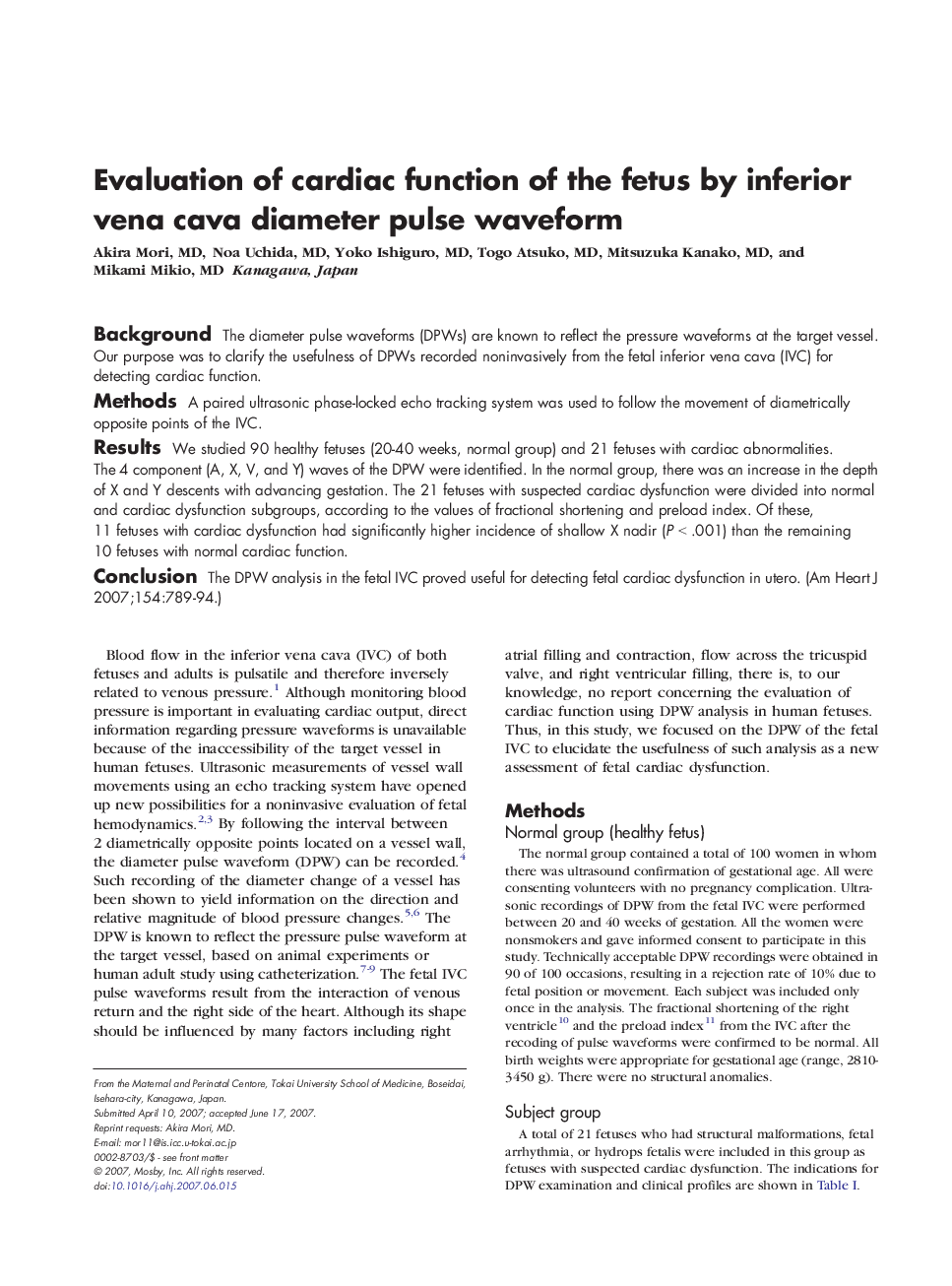| Article ID | Journal | Published Year | Pages | File Type |
|---|---|---|---|---|
| 2849125 | American Heart Journal | 2007 | 6 Pages |
BackgroundThe diameter pulse waveforms (DPWs) are known to reflect the pressure waveforms at the target vessel. Our purpose was to clarify the usefulness of DPWs recorded noninvasively from the fetal inferior vena cava (IVC) for detecting cardiac function.MethodsA paired ultrasonic phase-locked echo tracking system was used to follow the movement of diametrically opposite points of the IVC.ResultsWe studied 90 healthy fetuses (20-40 weeks, normal group) and 21 fetuses with cardiac abnormalities. The 4 component (A, X, V, and Y) waves of the DPW were identified. In the normal group, there was an increase in the depth of X and Y descents with advancing gestation. The 21 fetuses with suspected cardiac dysfunction were divided into normal and cardiac dysfunction subgroups, according to the values of fractional shortening and preload index. Of these, 11 fetuses with cardiac dysfunction had significantly higher incidence of shallow X nadir (P < .001) than the remaining 10 fetuses with normal cardiac function.ConclusionThe DPW analysis in the fetal IVC proved useful for detecting fetal cardiac dysfunction in utero.
